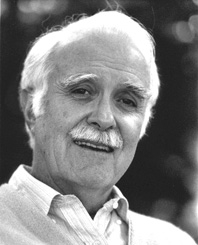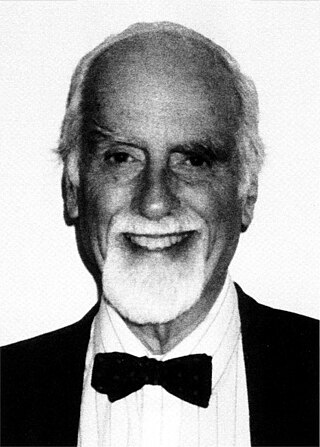Related Research Articles

Motivation is an internal state that propels individuals to engage in goal-directed behavior. It is often understood as a force that explains why people or animals initiate, continue, or terminate a certain behavior at a particular time. It is a complex phenomenon and its precise definition is disputed. It contrasts with amotivation, which is a state of apathy or listlessness. Motivation is studied in fields like psychology, motivation science, and philosophy.
Need for power (nPow) is a term that was popularized by renowned psychologist David McClelland in 1961. McClelland's thinking was influenced by the pioneering work of Henry Murray, who first identified underlying psychological human needs and motivational processes (1938). It was Murray who set out a taxonomy of needs, including needs for achievement, power, and affiliation—and placed these in the context of an integrated motivational model. McClelland was inspired by Murray's research, and he continued to further develop Murray's theory by focusing on this theory in regard to the human population. In McClelland's book The Achieving Society, nPow helps explain an individual's imperative to be in charge. According to his work there are two kinds of power, social and personal.
Thematic apperception test (TAT) is a projective psychological test developed during the 1930s by Henry A. Murray and Christiana D. Morgan at Harvard University. Proponents of the technique assert that subjects' responses, in the narratives they make up about ambiguous pictures of people, reveal their underlying motives, concerns, and the way they see the social world. Historically, the test has been among the most widely researched, taught, and used of such techniques.
The two-factor theory states that there are certain factors in the workplace that cause job satisfaction while a separate set of factors cause dissatisfaction, all of which act independently of each other. It was developed by psychologist Frederick Herzberg.
In psychology, a projective test is a personality test designed to let a person respond to ambiguous stimuli, presumably revealing hidden emotions and internal conflicts projected by the person into the test. This is sometimes contrasted with a so-called "objective test" / "self-report test", which adopt a "structured" approach as responses are analyzed according to a presumed universal standard, and are limited to the content of the test. The responses to projective tests are content analyzed for meaning rather than being based on presuppositions about meaning, as is the case with objective tests. Projective tests have their origins in psychoanalysis, which argues that humans have conscious and unconscious attitudes and motivations that are beyond or hidden from conscious awareness.
Content theory is a subset of motivational theories that try to define what motivates people. Content theories of motivation often describe a system of needs that motivate peoples' actions. While process theories of motivation attempt to explain how and why our motivations affect our behaviors, content theories of motivation attempt to define what those motives or needs are. Content theory includes the work of David McClelland, Abraham Maslow and other psychologists.

Henry Alexander Murray was an American psychologist at Harvard University. From 1959 to 1962, he conducted a series of psychologically damaging and purposefully abusive experiments on minors and undergraduate students. One of those students was Ted Kaczynski, later known as the Unabomber.
Self-determination theory (SDT) is a macro theory of human motivation and personality that concerns people's innate growth tendencies and innate psychological needs. It pertains to the motivation behind people's choices in the absence of external influences and distractions. SDT focuses on the degree to which human behavior is self-motivated and self-determined.

John William Atkinson, also known as Jack Atkinson, was an American psychologist who pioneered the scientific study of human motivation, achievement and behavior. He was a World War II veteran, teacher, scholar, and long term member of the University of Michigan community.
Managerial psychology is a sub-discipline of industrial and organizational psychology that focuses on the effectiveness of individuals and groups in the workplace, using behavioral science.
The need for affiliation (N-Affil) is a term that was popularized by David McClelland and describes a person's need to feel a sense of involvement and "belonging" within a social group; McClelland's thinking was strongly influenced by the pioneering work of Henry Murray who first identified underlying psychological human needs and motivational processes (1938). It was Murray who set out a classification of needs, including achievement, power and affiliation—and placed these in the context of an integrated motivational model. People with a high need for affiliation require warm interpersonal relationships and approval from those with whom they have regular contact. Having a strong bond with others make a person feel as if they are a part of something important that creates a powerful impact. People who place high emphasis on affiliation tend to be supportive team members, but may be less effective in leadership positions. A person who takes part in a group, whether it be a movement or project, helps create a push towards a sense of achievement and satisfaction for the individual and the whole.

David Clarence McClelland was an American psychologist, noted for his work on motivation Need Theory. He published a number of works between the 1950s and the 1990s and developed new scoring systems for the Thematic Apperception Test (TAT) and its descendants. McClelland is credited with developing Achievement Motivation Theory, commonly referred to as "need for achievement" or n-achievement theory. A Review of General Psychology survey published in 2002, ranked McClelland as the 15th most cited psychologist of the 20th century.
Need theory, also known as Three needs theory, proposed by psychologist David McClelland, is a motivational model that attempts to explain how the needs for achievement, affiliation, and power affect the actions of people from a managerial context. This model was developed in the 1960s, two decades after Maslow's hierarchy of needs was first proposed in the early 1940s. McClelland stated that we all have these three types of motivation regardless of age, sex, race, or culture. The type of motivation by which each individual is driven derives from their life experiences and the opinions of their culture. This need theory is often taught in classes concerning management or organizational behaviour.
In 1938, Henry Murray developed a system of needs as part of his theory of personality, which he named personology. He argued that everyone had a set of universal basic needs, with individual differences on these needs leading to the uniqueness of personality through varying dispositional tendencies for each need; in other words, specific needs are more important to some than to others. In his theory, Murray argues that needs and presses acted together to create an internal state of disequilibrium; the individual is then driven to engage in some sort of behavior to reduce the tension. Murray believed that the study of personality should look at the entire person over the course of their lifespan – that people needed to be analysed in terms of complex interactions and whole systems rather than individual parts – and an individual's behaviors, needs and their levels, etc. are all part of that understanding. Murray also argued that there was a biological basis for personality and behavior.
Achievement motivation inventory (AMI) is a psychological test to assess a broad construct of job-related achievement motivation. It is used within personnel selection, promotion, I/O-psychological research, personality research and other applications in a work context.
Goal orientation, or achievement orientation, is an "individual disposition towards developing or validating one's ability in achievement settings". In general, an individual can be said to be mastery or performance oriented, based on whether one's goal is to develop one's ability or to demonstrate one's ability, respectively. A mastery orientation is also sometimes referred to as a learning orientation.
Work motivation is a person's internal disposition toward work. To further this, an incentive is the anticipated reward or aversive event available in the environment. While motivation can often be used as a tool to help predict behavior, it varies greatly among individuals and must often be combined with ability and environmental factors to actually influence behavior and performance. Results from a 2012 study, which examined age-related differences in work motivation, suggest a "shift in people's motives" rather than a general decline in motivation with age. That is, it seemed that older employees were less motivated by extrinsically related features of a job, but more by intrinsically rewarding job features. Work motivation is strongly influenced by certain cultural characteristics. Between countries with comparable levels of economic development, collectivist countries tend to have higher levels of work motivation than do countries that tend toward individualism. Similarly measured, higher levels of work motivation can be found in countries that exhibit a long versus a short-term orientation. Also, while national income is not itself a strong predictor of work motivation, indicators that describe a nation's economic strength and stability, such as life expectancy, are. Work motivation decreases as a nation's long-term economic strength increases. Currently work motivation research has explored motivation that may not be consciously driven. This method goal setting is referred to as goal priming. Effects of primed subconscious goals in addition to goals that are consciously set related to job performance have been studied by Stajkovic, Latham, Sergent, and Peterson, who conducted research on a CEO of a for-profit business organization using goal priming to motivate job performance. Goal priming refers to the achievement of a goal by external cues given. These cues can affect information processing and behaviour the pursuit of this goal. In this study, the goal was primed by the CEO using achievement related words strategy placed in emails to employees. This seemingly small gesture alone not only cost the CEO very little money, but it increased objectively measured performance efficiency by 35% and effectiveness by 15% over the course of a 5-day work week. There has been controversy about the true efficacy of this work as to date, only four goal priming experiments have been conducted. However, the results of these studies found support for the hypothesis that primed goals do enhance performance in a for-profit business organization setting.
Employee motivation is an intrinsic and internal drive to put forth the necessary effort and action towards work-related activities. It has been broadly defined as the "psychological forces that determine the direction of a person's behavior in an organisation, a person's level of effort and a person's level of persistence". Also, "Motivation can be thought of as the willingness to expend energy to achieve a goal or a reward. Motivation at work has been defined as 'the sum of the processes that influence the arousal, direction, and maintenance of behaviors relevant to work settings'." Motivated employees are essential to the success of an organization as motivated employees are generally more productive at the work place.
The 3H-model of motivation was developed by professor Hugo M. Kehr, PhD., at UC Berkeley. The 3C-model is an integrative, empirically validated theory of motivation that can be used for systematic motivation diagnosis and intervention.

The self-worth theory of motivation, which is adapted from the original theory of achievement motivation, describes an individual's tendency to protect their sense of self-worth as the motive of avoiding failure and hence approaching success. Such theory commonly applies to students in the school context where frequent evaluation of one's ability and comparison between peers exist. A majority of students believe that being academically competent is a way of maintaining self-esteem, thus try to maximise their academic competence and avoid failure. The effort an individual puts in for the maximisation of academic competence to protect self-worth is often defined as a “double-edged sword”; while it is an essential factor of success, it can also result in feelings of worthlessness and incapability if one fails. To avoid the conclusion of incapability and hence maintain self-worth, some students choose to use defensive strategies such as putting in less effort and setting low standards towards the event of evaluation. These strategies, which support the maintenance of self-worth, are called self-handicapping and defensive pessimism respectively.
References
- 1 2 Murray, H.A. (1938). Explorations in Personality. New York: Oxford University Press. p. 164.
- ↑ McClelland, D.C. (1961). The Achieving Society. New York: Free Press.
- ↑ "What is need for achievement? Definition and meaning". BusinessDictionary.com. Archived from the original on 2015-04-23. Retrieved 2012-11-26.
- ↑ "McClelland's Human Motivation Theory: Discovering What Drives Your Team." McClelland's Human Motivation Theory. N.p., n.d. Web. 27 Nov. 2014.
- ↑ Jex, S.; Britt, T. (2008). Organizational Psychology: A scientist-practitioner approach. Hoboken, N.J.: John Wiley & Sons, Inc.
- ↑ "Index Examples." David McClelland Achievement Motivation Needs Theory. N.p., n.d. Web. 30 Nov. 2014.
- ↑ The Achievement Motive, By McClelland, D. C., Atkinson, J. W., Clark, R. A., Lowell, E. L., New York: Appleton-Century-Crofts, 1953.
- ↑ (p531)
- 1 2 3 4 5 McClelland, David C. (1958). "Methods of Measuring Human Motivation". In Atkinson, John W. (ed.). Motives in Fantasy, Action and Society. Princeton, N.J.: D. Van Nos-trand.
- ↑ http://www.isites.harvard.edu/%5B%5D
- ↑ McClellan, David; et al. (1982). "Leadership Motive Pattern and Long-Term Success in Management". Journal of Applied Psychology. American Psychological Association. 67 (6): 737–743. doi:10.1037/0021-9010.67.6.737. ISSN 0021-9010.
- ↑ McClelland, David C. (November–December 1965). "Achievement Motivation Can Be Developed". Harvard Business Review. 43: 68.
- ↑ McClelland, David C.; Winter, David G. (1969). Motivating Economic Achievement. New York: Free Press.